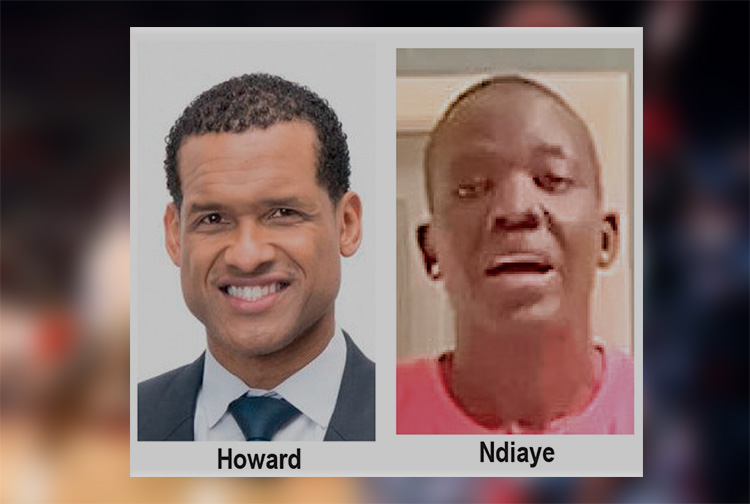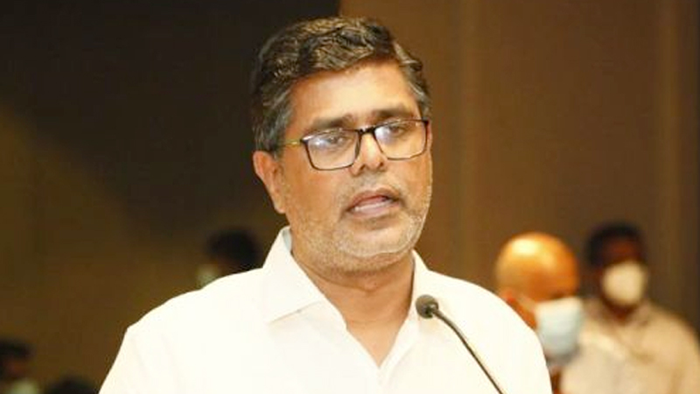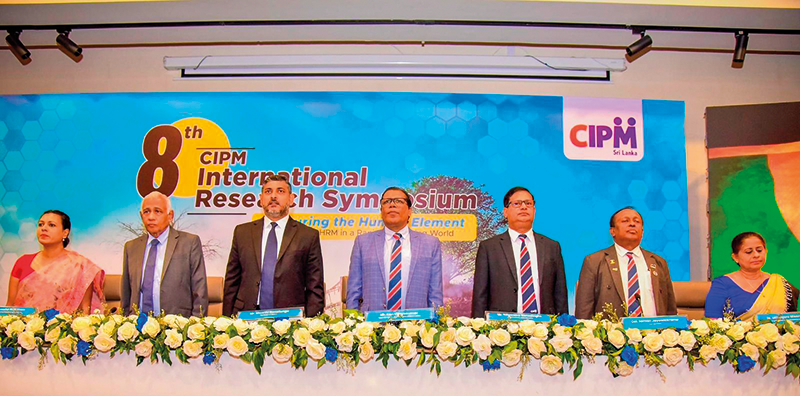News
Spinning conspiracy theories or launching political manifestos when DISASTER management is the need of the hour

By Chandre Dharmawardana
There is always a certain amount of truth in all conspiracy theories, putting the blame on the CIA, RAW, the Tiger Diaspora, ISIS, Chinese-Debt Trap, NGOs, etc. But it is NEVER the whole truth. Even looking for the truth becomes secondary when mitigating disaster should become the priority.
The suggestion that the upheaval in Sri Lanka is a part of the rise of drone warfare is just another twist in the current slew of conspiracy theories. The US military machine gaining more and more control of the Electro-Magnetic spectrum is part of the cyber-warfare that started some decades ago. Military satellites that fly over every country, deployed by the US, provide the infrastructure for military deployment of weapons, be they drones or intercontinental missiles.
Military observers expected greater use of drone warfare in Ukraine, but saw very little. Even in Afghanistan where the terrain is difficult, although strategists talked of a drone war to heavily tilt the war to the US, it did not happen.
Similarly, in the battle against ISIS, while some drone hits were used to “remove” a few ISIS leaders, Osama, etc., extensive application of drones did not materialise. Drones have failed to significantly penetrate North Korea. The whole point is, shielding from electromagnetic radiation can be done by simply covering yourself with metal foil (c.f., “Faraday cage”, a technology going back to Michael Faraday of the 19th century).
The US was booted out by Cuban rebels, the Viet Cong, in Iran, and by the primitive Taliban. The US proxy wars in many other places (e. g., Somalia) have stalled in spite of vastly superior technology.
So, most conspiracy theories,are strongly hyped up tabloid stuff without backup evidence from any of the conflict zones or military fronts.
In Sri Lanka, the social unrest started with farmers protesting when they foresaw failed harvests when the government told them to go organic and use traditional methods that avoid agro-chemical inputs. The upper-class proponents of organic farming who had fondly grown tomatoes in their hobby backyards did not know that every kilo of chemical fertiliser has to be replaced by huge amounts (metric tonnes) of organic manure to get viable harvests.
That Sri Lanka is an agrarian society is its strength and its weakness. Successive rulers (except perhaps the Senanayakes) had merely paid lip service to this but gone on to undermine the farmers. The left movements with their accent on urban trade unions and “industrialisation” have been largely detrimental to farmers. Organisations, like MONLAR, support the fertiliser fiasco and idolize Luddites.
The nationalists (be they Sinhala or Tamil) have also been detrimental to farmers in directing them to medieval agricultural practices, claiming that the moderns have allegedly “poisoned mother earth with agrochemicals”. It was Gunadasa Amarasekera who wrote a forward to Channa Jayasumana’s slanderous book named “Wakugadu Hatana”.
So, the “Jathika” movements and their politicians blindly misled the farmers. The consequent protest by farmers was genuine and not spawned by the “CIA” or other agents. The protest by farmers was strengthened by the revolt of the middle-class urban dwellers who couldn’t even cook their meals as the supply of cooking gas dwindled out, or exploded in monkeyed gas cylinders. The usually dormant middle class also came out to protest.
The protest was hijacked and coordinated into a concerted event, using whatsApp and Facebook messages. The slogan “Gota Go Home” was coordinated to appear in all agitations, including in Western Capitals. It is easy to ascertain that the protests in Western capitals were partly coordinated by JVP-linked groups.
While the JVP is ostensibly a leftist Marxist party, it is also alleged to be funded by US-linked political interests; the JVP was a significant component of the US-backed Yahapalanaya government. So, identifying the JVP and some other leftist fronts as mere Western instruments is a common type of conspiracy theory. More realistically, the JVP is an opportunistic political organisation taking funds from anyone without much public backing, but well organised for agitation and propaganda.
The theories on class war and historical materialism have now proved false by post-World-War-I and WWII histories. But they still provide simplified political messages that resonate with some youth groups and an older generation of Marxists still driven by 1950s nostalgia.
The protesters in ‘GotaGoGama’ at Galle Face are supported by meal packets provided by a number of private companies. It has become a surreal “big-match-style” carnival for the middle-class and elite Colombo youth who can pride themselves of being “militant”.
However, all this is now irrelevant. The task of destroying Sri Lanka was during 2012-2022, mostly due to mismanagement by uneducated politicians rather than due to foreign machinations (that were certainly there) or due to corruption (which was certainly there).
From 2009-2011, the Sri Lankan economy grew very fast due to the money poured into infrastructure development (roads, fly-overs, bridges, railways, electric grids, resource structures), and in rehabilitating and de-mining the North and East. But this construction was largely supported by borrowed money. From 2012 onwards the economy dipped downwards. So, most of the forex earnings went to pay loans, buy fuel (energy) and food.
Even in 2009 (and also before and after) I have written many articles and given many seminars, etc., in Sri Lanka emphasising that the money spent for food and fuel can be readily saved by simple locally available technological steps that involve the agricultural sector and the energy sector. [https://dh-web.org/place.names/posts/dev-tech-2009.ppt]
However, politicians preferred turn-key vanity projects that guaranteed earning opportunities for themselves without realising that they are forfeiting the whole country.
Now that the ship has sunk, the politicians have gone to the IMF, the international Shylock. A mere pittance of a loan will come, after agreeing to put “matters right” by “cost cutting”. However, on listening to the speeches by various economists (e.g., Dr. Harsha de Silva of the Opposition) or political leaders (e.g., Anura Kumara Dissanayake) we see that the political leaders do not understand that there is a catastrophe. They are talking of long-term projects like “rapid industrialization”, “cutting corruption”, “jailing the culprits”, etc., that we have heard from them in previous times.
But what about impending riots when famine strikes, garbage accumulates, water pumps stop, hospitals close, etc.,? Where are their disaster plans?
If you are bankrupt, you cannot get loans any more. Mere charity will leave you as a perpetual pauper. So, is Sri Lanka to identify its sellable assets and sell them to international buyers who have the Forex to manage them? The Tea plantations and other agricultural assets, the loss-making SriLankan Airlines and the Ceylon Electricity Board, etc., are they all under the gun? Is this the inevitable fate of small nations that fail to retain self-sufficiency in food and energy supplies? This is made more painful because Sri Lanka was one clear case where such self-sufficiency was possible
Even the UK has sold some of its priced industries, and allowed London to be the centre of questionable money laundering to avert economic collapse that loomed ahead. In Sri Lanka, the collapse has come. Is “the family jewellery” on the auction block?
The politicians planning an interim government or wanting to go it alone have to reveal their plans for facing disaster.
News
US sports envoys to Lanka to champion youth development

The U.S. Embassy in Colombo welcomed the U.S. Sports Envoys to Sri Lanka, former National Basketball Association (NBA) and Women’s National Basketball Association (WNBA) players Stephen Howard and Astou Ndiaye, from June 8 through 14.
The Public Diplomacy section of the U.S. Embassy said that it would launch a weeklong basketball program intended to harness the unifying power of sports, made possible through collaboration with Foundation of Goodness and IImpact Hoop Lab.
While in Sri Lanka, Howard and Ndiaye, both retired professional basketball players, will conduct a weeklong program, Hoops for Hope: Bridging Borders through Basketball. The Sports Envoys will lead basketball clinics and exhibition matches and engage in leadership sessions in Colombo and Southern Province for youth aged 14-18 from Northern, Uva, Eastern and Western Provinces, offering skills and leadership training both on and off the court. The U.S. Envoys will also share their expertise with the Sri Lanka Basketball Federation, national coaches, and players, furthering the development of basketball in the country. Beyond the clinics, they will collaborate with Sri Lankan schoolchildren to take part in a community service project in the Colombo area.
“We are so proud to welcome Stephen and Astou as our Sports Envoys to Sri Lanka, to build on the strong people-to-people connections between the United States and Sri Lanka,” said U.S. Ambassador Julie Chung. “The lessons that will be shared by our Sports Envoys – communication, teamwork, resilience, inclusion, and conflict resolution – are essential for leadership development, community building, equality, and peace. The U.S. Sports Envoy program is a testament to our belief that sports can be a powerful tool in promoting peace and unity.”
News
Rahuman questions sudden cancellation of leave of CEB employees

SJB Colombo District MP Mujibur Rahuman in parliament demanded to know from the government the reasons for CEB suspending the leave of all its employees until further notice from Thursday.
MP Rahuman said that the CEB has got an acting General Manager anew and the latter yesterday morning issued a circular suspending leave of all CEB employees with immediate effect until further notice.
“We demand that Minister Kanchana Wijesekera should explain this to the House. This circular was issued while this debate on the new Electricity Amendment Bill was pending. There are many who oppose this Bill. The Minister must tell parliament the reason for the urge to cancel the leave of CEB employees,” the MP said.However, Speaker Mahinda Yapa Abeywardena prevented Minister Wijesekera responding to the query and said that the matter raised by MP Rahuman was not relevant.
News
CIPM successfully concludes 8th Annual Symposium

The Chartered Institute of Personnel Management (CIPM) successfully concluded the 8th Annual CIPM Symposium, which took place on 31st May 2024. Themed “Nurturing the Human Element—Redefining HRM in a Rapidly Changing World,” the symposium underscored the pivotal role of human resource management (HRM) in today’s dynamic global landscape. Since its inception in 1959, CIPM has been dedicated to advancing the HR profession through education, professional development, and advocacy, solidifying its position as Sri Lanka’s leading professional body for HRM.
Ken Vijayakumar, the President of the CIPM, graced the occasion as the chief guest. The symposium commenced with the welcome address by the Chairperson, Prof. Arosha Adikaram, followed by the Web Launch of the Symposium Proceedings and Abstract Book by the CIPM President. The event featured distinguished addresses, including a speech by Chief Guest Ken Vijayakumar, President of CIPM, and an address by Guest of Honor Shakthi Ranatunga, Chief Operating Officer of MAS Holdings Pvt. Ltd., Sri Lanka.
The symposium also featured an inspiring keynote address by Prof. Mario Fernando, Professor of Management and Director of the Centre for Cross Cultural Management (CCCM) at the University of Wollongong, Australia.
Vote of Thanks of the inauguration session was delivered by Dr. Dillanjani Weeratunga, Symposium Co-chair.
The symposium served as a comprehensive platform for researchers to present their findings across a wide range of critical topics in HRM. These included Cultural Diversity and Inclusion, Talent Development and Retention, Ethical Leadership and Corporate Social Responsibility, Adapting to Technological Advancements, Mental Health and Well-being at Work, Global Workforce Challenges, Employee Empowerment, and Reskilling and Upskilling.
The plenary session was led by Prof. Wasantha Rajapakse. Certificates were awarded to the best paper presenters during the valedictory session, followed by a vote of thanks delivered by Kamani Perera, Manager of Research and Development.
The annual symposium of CIPM was a truly inclusive event, attracting a diverse audience that spanned undergraduates, graduates, working professionals, research scholars and lecturers. This widespread interest highlights the symposium’s significance in the field of HRM, offering a unique opportunity for everyone to network and learn from scholarly brains.The CIPM International Research Symposium was sponsored by Hambantota International Port, Sri Lanka Institute of Information Technology (SLIIT), E B Creasy & Co. PLC, and Print Xcel Company.












